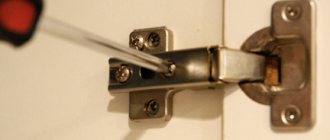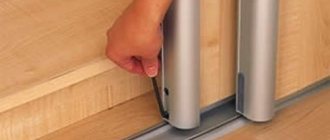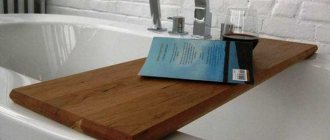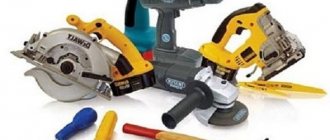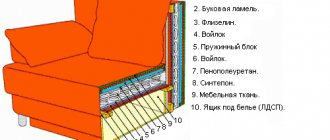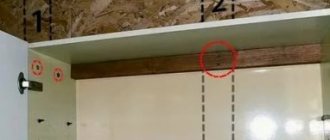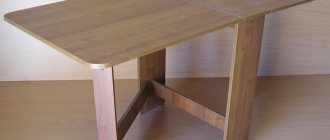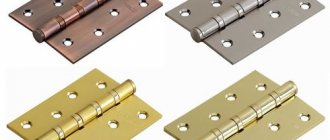Situation when repair of the door closer on kitchen furniture is necessary
If the cabinet door does not close well or does not close at all, the door closer on the kitchen furniture should be repaired.
The kitchen is not only a place where food is prepared - it is a place where the whole family gathers at the table in the evening, it is the hearth of any home. It is for this reason that it is so important that all appliances and kitchen furniture in the kitchen are in good condition. If something is wrong, it is advisable to repair the kitchen furniture. It is so important that the color scheme of the kitchen set pleases its owners, however, the most important thing is not the color of the chosen kitchen, but the serviceability of its design. Numerous cabinets, shelves - they are all supported by a special mechanism called a closer.
What is a door closer and why is it needed?
A closer is a mechanism that controls the smooth closing of cabinet doors and shelves. It is this that ensures silent and smooth closing of the kitchen furniture door, and also slows down this process.
In many ways, installing a closer prevents the appearance of chips on the surface of kitchen furniture, and also eliminates the occurrence of other damage to the furniture. No matter how paradoxical it may sound, the durability and quality indicators of a kitchen set largely depend on the serviceability of this part.
The closer is provided in a large number of modern furniture sets; if you have instructions, you can independently repair the closer on kitchen furniture, as well as install this component of the furniture set.
Roller or ball guides?
Modern furniture cannot do without retractable mesh baskets and drawers. A sliding wardrobe, a kitchen set or a dressing room, the undeniable advantages of using pull-out baskets and drawers over conventional shelves have led to the fact that it is currently difficult to imagine a place in the house where they would not be used.
Ease of access
— pull-out mesh baskets and drawers make it easy to get things in the depths. For example, in the kitchen, to get a frying pan located deep in the unit, you just need to pull out the drawer and take it out. In the case of conventional shelves, you would first have to take out all the dishes on the shelf to free access to the necessary frying pan, and then put all the items taken out at the beginning back. Pull-out mesh baskets and drawers provide direct access to your belongings.
Use of all useful cabinet space -
Providing convenient and easy access to the contents, pull-out baskets allow you to rationally use the entire internal space of baskets and drawers, which is especially important for small wardrobes. Pull-out mesh baskets and drawers help keep your home tidy.
However, it is not possible to assemble a pull-out mesh basket or drawer without a pull-out guide. There are a huge number of varieties and modifications of retractable guides that differ in design, size, extension size, method of attachment to the retractable piece of furniture, their load-bearing capacity, and so on... Currently, the two most common types are: roller guide and ball guide.
Roller guides.
Simple installation, easy retraction and low price - these are the three main components of the popularity of roller guides. However, this type of guides also has a number of disadvantages: the drawer does not extend all the way, when opened, the guides make a lot of noise and can only withstand a small load.
Roller guides consist of two parts, one of which is rigidly mounted on the pull-out element, and the other on the cabinet frame. Extension occurs due to plastic rollers interspersed in special grooves. You can remove a drawer with roller guides by pulling it out as far as it will go, lifting it up a little, and then pulling it out further. There are no buttons or hidden mechanisms required to remove the drawer. Install the box in the reverse order.
Ball guides.
Ball guides belong to a higher class of extension system than roller guides. Among the undeniable advantages of ball guides are full extension of mesh baskets and drawers, the ability to withstand significant loads, almost twice that permissible for roller systems, silent and smooth extension, high reliability and long service life.
The operating principle of the closer is extremely simple
The spring-type mechanism, securely disguised inside a special capsule made of metal, is filled with oil or liquid contents with silicone impurities. The speed of closing the doors is regulated through the operation of special valve mechanisms.
Pressure is applied to the kitchen cabinet door and it closes under its own weight. At the same time, the door has a strong impact on the stop mechanism of the closer. The liquid contents covering the spring mechanism end up in the capsule sleeve (mainly in its rear part). At the same time, the liquid contents are retained in the sleeve itself with the participation of a double system of oil seals. A specially built-in mechanism that regulates, narrows and widens the outflow channel makes it possible to control the speed of door closing. This is done by adjusting the speed of movement of the piston with the above element.
According to the spectrum of action, closers are distinguished:
As a rule, gas closers are installed on inexpensive kitchen units. The locker door is closed using a gas closer at maximum speed until a certain period. At the moment of closing, the door is affected by the closer, including the gas placed in the capsule. Largely due to this, the cabinet doors close silently and the process occurs smoothly.
The most popular these days are oil closers, which have one significant drawback - the operation of this type of closers is distorted if the temperature in the room drops. In terms of cost, oil closers are relatively inexpensive, and this type of closers is also supported by the fact that a person who does not understand the installation of these components can install the closer correctly, provided they have instructions for its installation, including replacing it and repairing the closer on kitchen furniture.
Source: mebrestavracia.ru
Smooth closing of doors using shock absorbers or closers
Smooth closing can be achieved in less progressive ways - this is the use of shock absorption systems. The Blum company calls such systems BLUMOTION .
Shock absorber or closer, which is installed on the hinge arm
This system in the form of an overlay is installed directly on the hinge arm. There are limitations here, such overlays can only be installed on Blum hinges and the design of the hinge must allow this. This information can be obtained from the seller. Let’s say at the moment you don’t have money for hinges with a built-in closer, but you can initially buy simple Blum hinges, and then buy additional hinge closers .
| Rice. 15. Operating diagram of the hinge closer |
| Rice. 16. Hinge on which you can install a hinge closer |
| Rice. 17. Blum hinge closer |
Shock absorber or closer, which is installed at the handle
This is a more universal solution for shock absorption when closing doors, called door shock absorber . Such closers can be used for hinges that are not equipped with a shock absorption system.
| Rice. 18. Shock absorber for doors |
The shock absorber can be installed in the following positions, according to the diagram. Usually, installing one door closer is sufficient.
Types of door closers for kitchen cabinets
The slamming of kitchen drawer and cabinet doors not only gets on your nerves, but also gradually damages the hinges on which these doors are hung. To extend the service life of this type of fittings, special mechanisms have been developed, called closers for kitchen cabinets. They close the doors silently and smoothly. And this is their main and only function. Modern kitchen furniture comes to the retail chain already with closers. The same goes for custom-made furniture. But if your house has an old-style set, then installing closers yourself is not a problem.
DIY ways to adjust the door closer
Doors greet us in any institution, be it the entrance to an entrance, an apartment, a room, administrative buildings or technical premises. Sometimes they give in to us easily and silently, quickly open and close, then we don’t seem to notice them, without being distracted by the need for additional effort. But in the event of any malfunction, the discomfort of opening the door becomes very noticeable and only adjusting the door closer can help. With your own hands you can not only adjust, but also install the fastening mechanism, so feel free to undertake this procedure.
The door closer is adjusted manually, without the use of additional equipment. All you may need is a screwdriver. Most often, the screws that secure the device to the plane and frame require a slotted screwdriver.
Types of kitchen closers
If we talk about the operating principle of kitchen closers, then it is necessary to outline the basic design of this mechanism. In fact, this is an ordinary spring, which is located in a metal capsule filled with technical oil. That is, when the doors are closed, the same spring is compressed. In this case, you can adjust the closing speed by slightly opening or vice versa closing the capsule valves.
It is not difficult to install a door closer yourself; the main thing is to accurately select the required type specifically for the specific type of piece of furniture where it will be installed. Typically, manufacturers complete with the mechanism and offer instructions for its installation. But if it is not there, then you can consult in the store.
All types of door closers for kitchen units are attached to ordinary self-tapping screws, which are included in the kit. In this case, the mechanism is installed in three places:
- On the door or wall of furniture.
- On the hinges.
- Between parts of loops.
Kitchen door closers with hinges are used for kitchen doors
The second position is quite rare due to the fact that special mounting sockets must be made in the loops themselves. If there are none, then the closers will have to be mounted using so-called Euroscrews. But this type of door closer is the most reliable. But they can only be used for kitchen cabinet doors. You can't put them on drawers.
For the latter, mechanisms of a different type are used, which are based on guides. They are attached to the body of the base cabinet, where the drawers are inserted. The mechanisms themselves are invisible, which is very important for the appearance of the headset. It should be noted that retractable closers can be installed not only on drawers; they are often used to install roll-out elements of kitchen furniture.
If we talk about purely design features, closers are divided into oil and gas. It is clear that in addition to oil, gas can be pumped into the capsule. How do they differ from each other in terms of their operation?
- Firstly, oil closers are more expensive than gas closers. They are more common on the market, and their operating principle is smooth and slow closing. It should be noted that manufacturers today offer various modifications of these mechanisms, and accordingly their price range is different. This makes it possible to select a closer at an appropriate cost that would satisfy a wide variety of consumers.
- The principle of closing a gas closer is slightly different from an oil closer. It quickly begins to close, then stops abruptly, and then closes slowly. This variety has one big advantage - the gas itself. If the cuffs in the capsule become leaky, which sometimes happens, the gas will simply vent. In the oil variety, oil stains will appear on the body of the furniture item. It seems like a small thing, but it’s unpleasant.
By design, kitchen closers are divided into gas and oil
As for the price. The range here is huge, so every consumer will find something to suit their pocket. It should be noted that kitchen closers for drawers are more expensive than for hinged doors.
Types of closers for the kitchen
Closers for kitchen cabinets differ from each other in several ways .
Mechanism of action
According to the principle of operation, closers are divided into:
- Gas (pictured). The door closes freely until it touches the stem. The rod penetrates the dense gas environment of the sealed chamber, slowing down the movement of the door. Air or nitrogen is used as a filler. The average service life of gas devices is 5 years.
- Polymer . The mechanism of action is similar to the gas version. Instead of gas, a liquid polymer filler based on silicone is used. In terms of durability, they do not exceed gas ones.
- Oily . From the beginning of movement, the door or drawer immediately acts on a spring enclosed in a capsule with oil. The oil slowly flows into the adjacent chamber. The speed slows down and the entire closing cycle occurs smoothly. Oil shock absorbers are more durable, lasting up to 10 years. They are more expensive than gas or polymer ones.
Gas-filled closers are used for folding structures. Oil devices are used for drawers, swing and sliding doors.
Important! When using oil devices in unheated rooms, difficulties may arise in the operation of the closer. Oil becomes thicker at low temperatures.
Mounting type
Based on the mounting method, closers are divided into three types :
- Mortise - a hole is drilled inside the side wall of the cabinet in which the device is placed.
- Cabinet-mounted - fixed to the surface of the kitchen unit parts using self-tapping screws or fastening bolts (pictured).
- Hinge - installed on door hinges in special sockets.
Often there are hinges with an already built-in closer . Check to see if your furniture has this option before installing additional hardware.
Lifting mechanisms
Furniture closers for the kitchen, used for hinged doors, are included in a separate category . Such doors can drop down or swing up.
There are four types of kitchen lifting mechanisms:
- Spring . A metal spring helps to pull or push the door. The design of the device is simple and rarely fails. It is not possible to leave a door ajar with a spring shock absorber; it must either be closed or completely open.
- Spring-oil . There is a spring in a sealed chamber filled with oil. By contracting, it overcomes additional resistance and ensures a slow, even opening of the door.
- Pneumatic (gas) . Smooth running is achieved by displacing air from a closed, impenetrable capsule with a special rod. A pressure difference occurs in different parts of it.
- Electrical . Complex programmable mechanisms with electric drive. Allows you to set the opening speed and maximum angle. The doors close automatically after a specified period of time. They open by pressing the facade or touching the handle.
Criteria for choosing drawers
Usually, when purchasing a kitchen set, everyone first of all pays attention to its appearance, that is, whether it is beautiful or not, whether it will fit into the interior of the kitchen or not. It is immediately checked whether all the furniture will fit in the planned place. Next, functionality is considered.
But no less important will be the installed fittings, which include door closers. After all, they are the ones who make kitchen furniture easy to use and increase its functionality. It is necessary to indicate that drawers are divided into two types: metaboxes and tandemboxes.
Metaboxes
This type of drawer is a design in which the side walls are made of durable metal (steel), usually painted with white enamel. Their design includes rollers that rest on the guides of the closer. Plus, manufacturers make it possible to properly organize the space due to the metabox function, such as raising it to a certain height. For this purpose, special elements are used in the design of the box.
The metabox system already comes with kitchen closers, so it is a ready-to-use item. It closes silently and very smoothly. You just need to push him a little.
Tandemboxes
This is still the same drawer, only its side walls can be made of either steel or glass. At the same time, it is equipped with a special tubular railing, which ensures extension of the structure. By the way, tandem boxes extend to their maximum length, which is very convenient. By default, they are equipped with automatic closers. It should be noted that there is a variety in the group of tandemboxes, the design of which includes an electric motor. With its help, the opening and closing of drawers occurs. You just need to press the front panel of the drawer or pull the handle lightly, and it will open. Push it lightly and it will begin to close.
Lifting mechanisms
For unknown reasons, lifting mechanisms for kitchen units do not belong to the group of door closers, although they perform the same functions. They are used in wall cabinets whose doors open upward. Therefore, handles are not installed on them. You just need to click on the facade, the door will open.
It should be noted that lifting mechanisms have a broader classification than door closers. They are divided into several groups that differ from each other purely structurally using different elements.
- Spring structures in the form of brackets. These are the cheapest mechanisms with good reliability. But they have one drawback - you cannot open the door in an intermediate position. That is, it opens to the maximum.
- Gas elevator. The functions of the spring in these mechanisms are performed by the pumped gas. A high-quality appearance with one drawback - in the closed position, the gas narrows, that is, its volume decreases, which means the pressure in the capsule increases. And this negatively affects the parts of the mechanism itself, which leads to their rapid wear.
- Electric, which are also the most expensive. Excellent mechanisms that are called “smart kitchen”.
- The market also offers types of lifting mechanisms that can be fixed in any opening position. In this case, the maximum opening angle is 107°. Experts note that these are the most reliable mechanisms.
- Folding. They are not only a lifting element for the kitchen unit door, but also its fastening element. Therefore, the door does not open, but rather tilts back, taking a position parallel to the facades of the kitchen furniture. You just need to press on the door itself, and it will rise up.
This is the variety of kitchen closers offered by manufacturers today. Inexpensive in price, they increase the usability of the headset. And all housewives have long appreciated this.
Source: mebeus.com
What problems can happen with furniture hinges?
Modern designer furniture, kitchen units, cabinets, shelves, are complemented by closing doors made of different materials, which are connected using hinges. Because of them, various types of breakdowns occur and eventually the furniture hinge will need to be repaired.
Causes of problems
- The door fell off. So the loop couldn't stand it. Reason: weak screwing of self-tapping screws or screws.
- The hinges were torn out by the roots. The main reason is the incorrect calculation of the depth for the screws or the door is too heavy for this fastener. Frequent opening and closing of furniture doors.
- Deformation of fasteners. The protective decorative coating has peeled off. Violation of furniture manufacturing technology. A crack or dent has appeared under the varnish facing film. Improper drying of wood when making furniture. Wear of mobile joints. The furniture has become misaligned.
- Manufacturing defects. Due to incorrect manufacturing of connecting parts, the result is defective fasteners, which, when screwed in, lead to frequent breakdowns.
- Frequent disassembly. Unfortunately, with frequent disassembly and assembly of furniture, it leads to the fact that the previous holes in the seats can no longer hold the fastening loops.
- Loosening. Occurs from frequent opening and not careful closing of doors. Make adjustments using screws. Do not twist, check that the lid fits tightly to the surface and there should be no movement. Otherwise, deformation will occur.
- Incorrect fitting of furniture hinges leads to problems.
How to repair a broken furniture hinge?
When furniture breaks down, any modern interior loses its appearance and, at first glance, new furniture instantly turns into old trash. There is some confusion in this situation. An uprooted hinge immediately catches the eye of household members or guests who come to the apartment. repair a furniture hinge at home yourself. We'll give you tips on repairing broken furniture hinges.
- You can raise the loop higher or lower it and screw it on.
- If there is nothing left to fasten to, then do the following: fill all the torn places with epoxy resin and put the fasteners in their original place. It has been proven that this method holds the loops for a long time. The resin must dry completely.
- Cut out the area of the torn loop and replace it with a new insert. Then adjust the color and attach a new loop.
- Attach a new block to the surface of the damaged door using self-tapping screws and screw in new hinges. If you don’t want to make other holes, then place the bars on glue and place them under a press. The press time is up to 10 hours, this is a kind of reinsurance against a new breakdown.
If there are only holes left on the surface of the furniture, then you can drive the wedges in and tighten them using special screws, but it is advisable to select them a little longer than the previous screws.
How to choose furniture hinges with closers
Unfortunately, there have been no global audits of manufacturers of furniture hinges with closers, which means it is simply not possible to name the best and worst brands of all those on the market. According to GOST, furniture hinges and guides for roll-out drawers are considered to be of high quality with a minimum service life of 20,000 opening and closing cycles. However, it is worth understanding that this is just a number; it depends on the experimental loads, that is, the mass and dimensions of the door.
How to replace it correctly with your own hands
Correctly replacing a broken furniture hinge consists of the following steps:
- You can replace it if you call a specialist, but in order to save money, you can replace the furniture hinge yourself. In place of the old hinge there are holes from screws or screws. Just take a special glue with the addition of small sawdust and cover the holes with a viscous composition. Wait a couple of hours and tighten the screws again. But we warn you right away, this method is not durable if you screw it in without the glue drying.
- Cover it with the same glue with furniture sawdust, then let it dry. We screw the hinges into the old place, only we choose the depth 3 millimeters deeper, but leave the same diameter. It has been tested more than once and the fasteners last a long time.
- It is necessary to move the bases of the sang and screw them on. Tip: replace the old fastener with a new one, because over time the hinge may become deformed.
- If, due to frequent breakdowns, the place for fastening has turned into a sieve, then you can make a small overlay from any material and screw the hinges back on. Using a special screwdriver, tighten firmly until the end.
With the knowledge gained, we can confidently say that if any of the above breakdowns occur, you will be able to cope on your own.
Source: pro-dom-mebel.ru
Closers for kitchen cabinets
Closers are installed on most modern furniture models. Having the instructions at hand, it will not be difficult to independently install the mechanism on any model of kitchen facades.
The hinges are designed to hold the doors closed. This means that the doors are not protected from sudden closing (strong bang, surface damage). If there is glass inside the door or the door is completely glass, then strong impact on it can lead to cracks.
Operating principle of furniture door closers
The operating process of door closers is simple. The mechanism is a spring, which is securely hidden inside a special metal capsule filled with oil or liquid with silicone. The door closing speed is controlled using special valves.
Pressure is applied to the solid wood facade door, and it begins to close under the influence of its own weight. In turn, the door begins to act more and more strongly on the closer’s emphasis. The liquid that covers the spring flows into the capsule sleeve (its rear part). It is held in the sleeve by a double system of seals. A special adjustment element that narrows and expands the outflow channel allows you to control the speed of closing the doors. This occurs by adjusting the speed of the piston movement with this element.
When closing, the door has a stronger effect on the closer. The adjusting element expands more and more and the piston outflow channel becomes smaller because of this. The piston slows down, allowing the door to close smoothly and quietly.
Gas closers are often installed in cheap kitchens. The principle of their operation is as follows - the door closes at maximum speed until a certain moment. At the end of the closing cycle, the door acts on the closer, which uses the gas contained in the capsule. Thanks to this, the furniture door closes silently and smoothly.
Advantages and disadvantages
Pros worth knowing:
- Smooth closing of the door, preventing damage.
- The door is completely closed.
- If a significant breakdown of the closer occurs, oil or liquid remains inside the capsule. Liquid does not damage the surface of hanging shelves with drawers.
- Can withstand sufficient load (can be used for massive doors).
- Large selection and varying prices of mechanisms.
- Long term use of door closers.
- Easy installation.
Flaws:
- The installation of the mechanism must be correct (strictly according to the instructions).
- The appearance of the installed door closer is not very aesthetic.
- Oil closers perform worse at low temperatures (increased oil viscosity).
How to install
At any furniture or hardware store you can purchase hinges with a special place for closers. This is a very convenient invention - the mechanism is hidden in furniture hinges.
To install the closer on the modules, you will need special self-tapping screws or furniture euroscrews, a screwdriver and instructions for the mechanism. Installing the finishing element is an easy process, even an inexperienced builder can handle it. It is necessary to strictly follow the instructions included with the closers.
When installing large closers for massive doors, the piston always remains on the immovable part of the wooden shelf. The rest of the closer is attached to the cabinet door. Just like large closers, any compact mechanism is installed on a fixed part of the cabinet.
Internal gas closers that are inserted into a hinge are the easiest to install. After fastening the hinges, you need to insert the closer into a special hole in it until it clicks - the mechanism is installed.
The closers are screwed onto the furniture body with euroscrews or self-tapping screws.
How to adjust after installation on the doors
After the mechanism is installed, it must be adjusted. It is worth paying attention to the following factors:
- Sliding speed.
- Closing speed of the base cabinet door.
- Closing tightness (fit).
The mechanism is adjusted using a screw on the body. By tightening the screw, the speed at which the door (or drawer) closes increases.
When weakened, it decreases. This is explained by the capacity of the piston outflow channel. The liquid flows at different speeds through the capsule into the sleeve and back, controlling the movement of the doors.
Correct installation of the closer is a guarantee of its long and trouble-free service.
Review of furniture fittings:
What to do if nothing works out?
It happens that the door closer is adjusted with good information preparation, the instructions are at hand, but still the result cannot be achieved.
The range of modern door closers is very diverse.
In this case, the point is the wrong choice of this part, especially for heavy metal entrance doors. Most likely, the European standard index does not match the weight or width of the door, the fastening angle is incorrectly attached, or the holes for the screws on which the closer is held are shifted.
In this case, the question of how to adjust the closer is not correct, since you need to change the intercom doors, or, more likely, remove the closer and install a new, more powerful one. You should also pay attention to the lever; it must be perpendicular to the plane of the door. If it is misaligned, one of the closer links may need to be moved. When purchasing door closers, know that adjustment is simple, especially if you have not lost the instructions.
Manufacturers of fittings for kitchen cabinets and bedroom furniture
Expensive oil closers use higher quality and more expensive oil. Let's look at the most popular manufacturers of kitchen furniture fittings:
- BLUM fittings . Austrian company producing various kitchen accessories. The most popular manufacturer of lifting mechanisms in Russia is bloom. The price of products is very varied (from 140 rubles to 800 rubles).
- Vauth Sagel . The second most popular manufacturer, popular in Russia. The German company is recognized as the best in the world. The price for closers is from 300 rubles to 1000 rubles.
- Hettih . German company - manufacturer. The cost of mechanisms and handles for furniture ranges from 150 to 400 rubles.
- Siro . Austrian company. The price of door closers ranges from 130 rubles to 500 rubles.
- agoform. The German company is a manufacturer of fittings for kitchen furniture. The cost of the company's products varies from 200 rubles to 900 rubles.
Video presentation of Bloom fittings:
Kitchen cabinets are used daily, which wears out the fittings. It is necessary to timely care for and clean the door closers from dirt.
- When a squeak appears, you need to tighten all the screws on the hinges.
- All fittings and roof rails in the interior are cleaned with a soapy solution and clean napkins.
- The hinges must be lubricated periodically.
- Do not clean the door closer mechanism with soda or other granular cleaning agents.
- You cannot “help” door closers close the doors all the way.
The mechanism of the closers is very simple, so breakdowns with proper operation are practically excluded. If a breakdown does occur, it is better to call a specialist or replace the broken door closer with a new one.
There are many manufacturing companies with different prices for accessories, so it is quite easy to select and install door closers according to your capabilities and needs. Installing the mechanism is also not difficult. The main thing is to follow the instructions exactly. You need to take care of kitchen fittings in the same way as all other household items. Proper installation and maintenance will allow you to enjoy silent closing of kitchen cabinet doors for a long time.
Frequent malfunctions of the door closer, self-repair and adjustment
A door closer is a special mechanism designed to automatically close operational, fire safety, entrance structures and structures equipped with an access control system. Often its parts and connections wear out and fail. The doors do not close, and may also move too slowly or, conversely, quickly, with a knock or slam. When the breakdowns are minor, specialists adjust the parameters of the device; in case of complex defects, they repair the door closer.
Depending on the type and model of the door mechanism, its defects and breakdowns, repairs are carried out either independently, but at the same time they find out the cause of the malfunction, or they call the technician who installed the mechanism.
Correct, efficient, trouble-free operation, which is a guarantee of the comfort and safety of people, is a property that shows what a closer should be. Proper initial installation, adjustment of device parameters, compliance with all operational requirements affect the quality of its work.
Correct traffic controller
Another common breakdown is related to the work of the traffic controller. The malfunction is caused by an increase in the viscosity of the liquid inside the housing. This problem can arise only after many years of using the closer (at least five years) and with a sharp drop in air temperature. The following contains detailed instructions on how to repair a door closer if problems arise with the adjuster. This type of repair can be classified as preventive work, which is recommended to be carried out twice a year - in spring and autumn, and not wait until the device wears out completely.
To do this, you must perform a certain sequence of actions:
- If the door closing speed increases or decreases significantly, you simply need to adjust one of the door closer screws. The second screw is responsible for the closing speed (usually, the screws on the closer body have the corresponding numbering, and the instructions for the mechanism describe in detail which screw is responsible for what).
- If you want to increase or decrease the movement of the door leaf until it enters the closing radius, use the first screw for this. It must be turned counterclockwise or clockwise, depending on what effect you want to achieve. The main rule is to never tighten the screw all the way. Initially, it is designed for only two turns, that is, the slightest turning it to one side will significantly affect the speed of movement of the blade.
- If you want to increase the door opening speed, turn the adjusting nut responsible for the operation of the spring.
- If you think that the door is closing too quickly, you can increase the delay time for the movement of the door leaf before slamming. Fix the door leaf at a ninety-five degree angle and adjust the corresponding screw.
These are the basic principles of how to repair a door closer , however, in some cases it is not recommended to carry out preventive measures on your own.
It is better to seek help from professionals who know all the intricacies and features of the work of door closers.
Frequent malfunctions
Malfunctions of the door device can be as follows:
- damage or breakage of the rod;
- the appearance of cracks in mechanism elements;
- bend, kink of the lever;
- linkage sticking;
- wear of seals;
- breakage of fasteners.
The following factors lead to these defects:
- improper operation of the mechanism;
- external influences on the door block (impacts, strong wind);
- placing a stone or foreign object to secure the door in the open position.
Damage can be corrected by repairing the door closer yourself. If the defect cannot be eliminated, then the mechanism is purchased.
Door closer device
This device consists of the following mechanisms and parts:
- spring;
- cast aluminum housing;
- precision piston;
- control valves;
- gears;
- needle bearing;
- rubber seals;
- fasteners.
The mechanism of operation of the closer is arranged as follows.
The main element of the design is a spring mechanism, which, when compressed, accumulates the energy necessary to close the doors. The compression process occurs by transferring the force of the lever rod to the spring. Toothed gears and racks drive the piston, while oil flows through internal passages into the free part of the housing. Adjusting the fluid flow rate affects the closing speed.
If the oil does not enter the released body of the device and leaks due to depressurization, then the door mechanism does not work. The problem can be solved with the help of repairs.
Leakage of working fluid
Oil leakage occurs due to large fluctuations in ambient temperature. Leaks often appear during the cold season. The thickness of the oil fluid directly depends on temperature changes.
The second reason for oil leakage is depressurization of the box, which occurs when it is damaged. If the defect is not severe, it must be eliminated using a simple sealant. If the crack is large or the oil has completely leaked out, sealant repair methods will not give a positive result, so the closer is replaced.
In cases of weak liquid filling at the factory, it is added to the door device. In this case, choose synthetic motor oil or shock absorber fluid. Oil is filled through control valves.
Damage to the lever mechanism
In case of malfunctions in the operation of the mechanism, pay special attention to the rod, check its condition and presence of damage. At the slightest malfunction, repairs are carried out.
You can fix the problem yourself. Before repairing a damaged rod, you should read the instructions for repairing and installing the door closer and act according to them.
Main types of door closer breakdowns
There are several most common breakdowns to which all door closers are susceptible. First of all, this is damage to the rod or device guides. This is caused by improper use of the closer, hitting the door or fixing the door leaf in the open position using a stone, mop, etc. A broken rod is relatively easy to repair. All damage to this part of the closer can be divided into three main groups:
- bending of the lever or its slight kink;
- lever jamming;
- breakage of fasteners.
If this is an ordinary break, the appearance of cracks, then in this case there will be no problems with how to repair the door closer . It is enough to use conventional welding. When bending the product, the closer should be disassembled and try to carefully align the rod. It is not a fact that she will be able to return to her original form. Therefore, you can buy a new product, which is sold in the appropriate stores. The cost of the rod is low and in the end it will be much cheaper than purchasing and installing a new door closer. Worn fasteners are also quite easy to replace. You just need to purchase the appropriate screws and install them in place of the old ones. You may have to use washers, but it all depends on the degree of wear of the fasteners.
Causes of breakdowns
High-quality repair of a door closer is possible only if the causes of defects and damage are correctly identified.
The causes of breakdowns may be:
- unfavorable, cold weather conditions;
- sudden opening and closing of doors;
- blocking the movement of the door leaf;
- closer overload.
Factors that determine whether repairs are possible
Manufacturers are not interested in affordable repair of door devices. Most of them have an all-alloy body. For such models, repair work is difficult. Damage such as worn seals or oil leakage cannot be repaired. Therefore, the closer must be dismantled and replaced.
The main importance in the reliable and efficient operation of the mechanism is the correct adjustment of the door device immediately after its installation.
Troubleshooting
Repairing a door closer with your own hands is not difficult.
If rod defects occur, carry out the following actions:
- If there is rust, anti-corrosion cleaning is done and treated with a special protective lubricant.
- If a small crack or break occurs, the welding method is used, after which the welds are ground to a smooth state without slag inclusions, sagging, or formations.
- Distortions or bends are carefully leveled using a hammer so that the lever does not burst under the influence of force.
If the door speed is abnormal, the device is adjusted.
How to repair
To repair breakdowns in the closer device, the following tools are required:
If complex defects are identified, a hammer or welding machine is required to correct them.
The procedure for carrying out repair work is as follows:
- Carefully inspect the closer body. There should be no leakage in a housing filled with oil.
- Check the security of the mounting screws. If the part is tight or loose, tighten it to the required level.
- Inspect the door block, the place of fastening and contact with the frame for cracks and dents that lead to distortion of the structure.
- Check the operation of the closer levers.
- Adjust the speed of closing and opening doors, slam, maximum swing angle.
- If damage is detected, repair the part.
- After the procedure, install the closer in place.
If the defect cannot be corrected independently, this situation can be resolved by replacing the closer.
Ease of operation
There are a number of useful tips on how to preserve the mechanism and not adjust the door closer in the future. First of all, there is no need to load the mechanism - do not let children ride on the door, do not hang heavy objects on it. Secondly, do not forcefully press it when opening it. Thirdly, choose a door closer that suits the parameters of your door.
Our article, as well as photo and video materials, can tell you how to adjust the door closer with your own hands. There is no need for strength, just dexterity, so both a woman and a teenager can cope with such work. If you don't know how to adjust the closer of your or public entrance door, don't despair, just imagine whether you would like to close faster from the widest position, or just slam at a palm's distance. In a couple of seconds you can understand how to increase the resistance of the door and how to weaken it. Any door closer is easy to adjust and can only be broken if the tension force exceeds its technical capabilities. In this case, you will see oil leakage, and this will mean that the device will have to be replaced. After finishing the work, do not forget to return the cover and check the operation of the door again.
Adjustment
Carrying out adjustments is a mandatory measure not only during operation of the mechanism, but also for prevention. The procedure is performed at least 2 times a year, and with seasonal temperature fluctuations this is done more often.
Adjusting the device consists of adjusting the speed of closing the door block using adjusting screws, pressing it against the frame, and smoothly decelerating when the doors are completely closed.
Repairing door closers is a simple technological process that, most often, even a novice master can do.
Source: odveryah.ru
